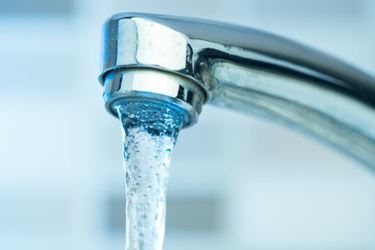Predicting How Effective Water Filters Are At Removing A Variety Of PFAS
By U.S. EPA

PFAS, or per- and polyfluoroalkyl substances, are a group of manufactured chemicals found in materials in our homes and workplaces, including firefighting foams, food packaging, personal care products, and apparel. Because of their widespread use and their persistence in the environment, many PFAS are found in the blood of people and animals all over the world and are present at low levels in the environment, including in drinking water. Scientific studies have shown that exposure to some PFAS in the environment may be linked to harmful health effects in humans and animals.
A major topic of research for EPA researchers is evaluating how effective different water treatment technologies are at removing PFAS from drinking water. Unfortunately, there are thousands of different types of PFAS chemicals and each of them may respond differently to the same type of water treatment technology. For example, PFOS (perfluorooctane sulfonic acid) is a chemical used in industrial processes and had been included in some consumer products like food packaging. It can be efficiently removed from drinking water using some of the most common treatment methods; however, PFBA (perfluorobutanoic acid), another PFAS chemical used for many of the same purposes, has been found to be more difficult to treat due to its smaller molecular size and different chemical characteristics.

One common method for treating drinking water is granular activated carbon (GAC). This method is used by many public water utilities because it is highly effective at removing a range of drinking water contaminants, including some PFAS. Similar carbon-based media is used in some home water filters, though these vary in what contaminants they are certified to remove and how long they are effective before needing replacement.
Because it is not feasible to conduct scientifically rigorous testing on every combination of drinking water treatment method and type of PFAS chemical, EPA researchers have been working on mathematical models that can predict treatment performance. One such effort, published by Jonathan Burkhardt and a team of EPA researchers, uses the physical and chemical characteristics of a PFAS molecule to estimate how well it may be adsorbed by a GAC filter. Specifically, for this study researchers estimated the “Freundlich isotherm parameters,” which are compound specific and can be used to predict how much of each will be adsorbed by (i.e., stick to the surface of) a granulated activated carbon filter, and thus be removed using this treatment method.
The researchers reported adsorption predictions for over 400 commercially available PFAS chemicals. They found that 76–87% of the PFAS chemicals studied are expected to be cost-effectively treated by GAC filtration; the rest need further study.
“These predictions can be used to broadly identify which PFAS are likely to be weakly adsorbed by GAC, which could result in GAC not being effective at treating those chemicals,” said Burkhardt. “This information can be used to prioritize additional testing when these potentially difficult-to-treat chemicals are present in a system.”
The publication also presented correlations that will allow the user to predict treatment for other PFAS that were not initially considered.
This work is part of a broader EPA research emphasis on PFAS, alongside the recently proposed PFAS National Primary Drinking Water Regulation. Studies are underway to validate these treatment performance predictions, both for GAC filters and for other treatment technologies not explored in this study. These results will be used to support these treatment studies and help support and interpret data from pilot studies on GAC systems. Alongside this research, EPA will be providing technical support for treatment options for emerging contaminants like PFAS through the Bipartisan Infrastructure Law.
To learn more about certification of at-home, point-of-use filters, see the EPA’s Home Drinking Water Filtration Fact Sheet and Consumer Tool for Identifying Point of Use Drinking Water Filters Certified to Reduce Lead.
